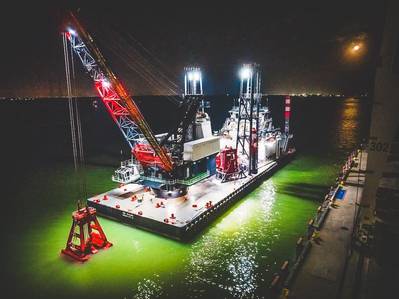When is a Vessel Built in America 'US Built'?
The United States reserves its domestic maritime trade to vessels “built in the United States” under a set of laws popularly referred to as the “Jones Act.” What qualifies as “U.S. built” under the law and U.S. Coast Guard interpretations was recently tested in the U.S. Court of Appeals for the Fifth Circuit case of Diamond Services Corp. v. Curtin Maritime Corp.
Coast Guard regulations provide a two-part test to determine whether a vessel constructed in the United States meets the “U.S. built” test. First, “all major components” of the vessel’s “hull or superstructure” must be “fabricated in the United States.” Second, the vessel must be “assembled entirely in the United States.” The Coast Guard defines a “major component” as a “new, separate and completely-constructed unit” weighing more than 1.5 percent of the vessel’s steelweight. The Coast Guard has referred to excluded items not being part of the hull or superstructure as “outfitting.”
The Coast Guard defines the “hull” as “the shell, or outer casing, and internal structure below the main deck which provide both the flotation envelope and structural integrity of the vessel in normal operation.” The Coast Guard defines the “superstructure” as “the main deck and any other structural part above the main deck.”
Items such as the propeller, propeller shaft, rudder, and rudder stock, for example, are not considered components of the “hull or superstructure.” Similarly, the Coast Guard has consistently held that installations which are not structurally integral to the vessel’s hull or superstructure, such as portable modules for accommodations and auxiliary machinery are exempt.
The Diamond Services case started with a Coast Guard determination issued to Curtin Maritime in 2019 regarding the proposed construction of a dredge in a U.S. shipyard. The Coast Guard has a process by which it will provide advance determinations whether a vessel will be considered “U.S.-built” with incorporated foreign manufactured items.
The determination addressed, among other things, the addition of foreign manufactured spuds (a steel post mounted vertically on the barge which when lowered can be used to anchor or lift the vessel) and a crane. The Coast Guard concluded that the spuds and crane, both being removable, were “outfitting” because the vessel would “remain a complete and intact vessel and will be fully capable of operating as a vessel without the spuds and crane.” When the vessel was complete, the Coast Guard issued to the owner a Certificate of Documentation with a coastwise endorsement making it fully eligible for the U.S. domestic maritime trade.
Diamond Services sued several defendants in June 2022 including the U.S. Coast Guard alleging that the Coast Guard’s issuance of the COD was arbitrary and capricious. Diamond Services argued, among other things, that the crane was “structural” and a “necessary part of the dredge” and that the use of the term “outfitting” had no statutory predicate.
The Fifth Circuit panel affirmed the District Court on April 17, 2024 finding that the Coast Guard’s interpretation was reasonable even though the U.S. build regulation being interpreted was ambiguous as to spuds and cranes. The Coast Guard determination that the spuds and crane were not part of the hull or superstructure of the vessel therefore prevailed. Similar “U.S. build” Coast Guard rulings can be found here.
Note: This article has been republished with permission from the author. The original is available here.















